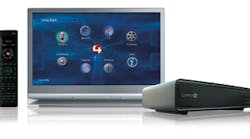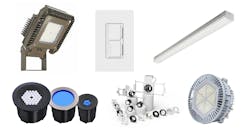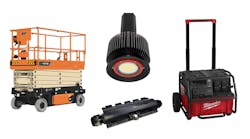According to Nielsen Media Research., today's typical U.S. household contains more TV sets than people (2.73 televisions vs. 2.55 occupants), and the average American spends more than 4 hr per day watching the tube. Needless to say, many of us may be more familiar with the workings of a television and its remote control than any other electrical/electronic device in our home — at least that's what one company is counting on. Control4, a Salt Lake City-based provider of IP-based control and entertainment systems, is taking advantage of America's love affair with the small screen to supply homeowners with affordable and accessible energy management.
“Control4's Home Energy Manager platform runs a special version of our software to provide homeowners with energy usage data,” says Paul Nagel, Control4's vice president of strategic development. “Using one of our remote controls and a standard TV set, homeowners will be able to view various types of information, including their household's cumulative energy consumption, the amount of power their HVAC system uses, or even how efficient their refrigerator is. This data can be broken down on a monthly, weekly, daily, or hourly basis. Many people are surprised at where they are using their energy and how slight changes in behavior can result in meaningful savings.”
The platform, which is based on standard technologies such as ZigBee, Wi-Fi, and Ethernet, operates by connecting users' homes to the Advanced Metering Infrastructure (AMI) being developed by some of the nation's major electric utility companies. Programmable thermostat control, load disconnect measurement and control, and lighting control are just a few of the system's key energy-saving offerings. For a typical 3-bedroom home, the company says lighting control alone can save more than 850 lb of CO2 emissions each year.
“The system also is scalable, which makes its price point more attractive than similar products,” says Nagel. “Users can start with just the basic controller and, as their needs change, they can add components like dimmers and switches, occupancy sensors, and a wireless thermostat.”
Unlike some home automation systems, the product features standards-based wireless/wired install capabilities, making it suitable for use in existing homes as well as new construction. Nagel says this was one of the product's main design considerations.
“We wanted to ensure the Home Energy Manager was suitable for the retrofit market,” he notes. “Now, anyone — not just people building or buying a new house — can reap the benefits of home automation, because there's no need to rip down walls to install wiring.”
According to Nagel, users thus far have been most impressed with the system's ease of use and accessibility, because almost everyone already owns and knows how to operate a television.
“Our product doesn't force home-owners to invest in a new touch screen, which can cost up to several thousand dollars — and they aren't required to sit down at a computer and log onto a utility's Web site to retrieve information or program the system,” he says. “Instead, they simply turn on their television.”
Shawn Lemay, owner of S&T Enterprises of Western New York in Williamsville, N.Y., can attest to the system's user-friendliness.
“I'm able to teach a homeowner how to use this system in less than an hour, whereas other home automation systems can take days to learn,” he says. “I constantly have users coming back wanting to add to their Control4 system. They seem to appreciate that the product is modular. So instead of having to swap out devices for bigger or more complex units, which can be cost prohibitive, homeowners simply add a piece to the system.”
In addition, the Home Energy Manager can be accessed from a common Web browser, giving users the ability to monitor energy usage and security from afar.
“There is also a third-party product that can be downloaded to an Apple iPhone or iTouch that allows people to operate the system from those devices,” adds Nagel.
Pricing for the Control4 platform's basic controller starts at $499 and includes a remote control. For more information, visit www.control4.com.




